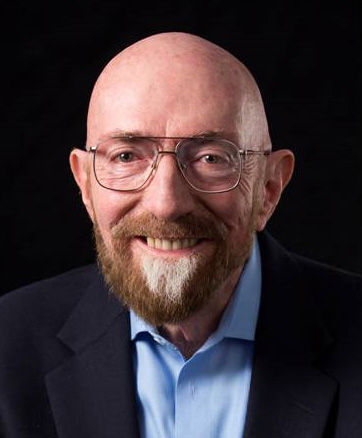Recapping Kip Thorne’s Lecture at Chapman Renowned Theoretical Physicist
May 17, 2016
 On May 12, 2016 world renowned theoretical physicist Kip Thorne presented a guest lecture at Chapman University as part of the Bensussen Visiting Artist Lecture Series.
On May 12, 2016 world renowned theoretical physicist Kip Thorne presented a guest lecture at Chapman University as part of the Bensussen Visiting Artist Lecture Series.
His lecture was riveting to both the art connoisseur and the unaffiliated observer.
Instead of discussing his usual topic of Einstein’s relativity, Thorne focused mainly on the fluid synthesis of science and art in the film Interstellar, for which he was the executive producer and key science advisor.
Thorne spoke on the unity of science and art. Specifically, how he’s been able to combine his theoretical discoveries on the warped side of the universe with paintings. This amalgamation is partially due to his work with longtime friend and colleague Professor Lia Halloran.
The two first met at a gathering for a mutual friend. Halloran a recent Yale graduate and self-described “physics groupie,” invited Thorne to her art gallery where they talked about space and time. As the two spoke, she began drawing the theoretical concepts Thorne was speaking about; in essence, she illustrated the scientific discoveries Thorne postulated.
The relationship blossomed into a mutual appreciation of each other’s expertise and a physical creation of exceptional artwork with scientific basis.
In 2005, when Thorne was presented with the opportunity to work on a movie, he saw this as an opportunity to start a new career that dabbled in the field of art, one he had been experiencing with Professor Halloran.
The movie, which later became Interstellar, was aimed to have Einstein’s relativity embedded into the very fabric of the film. It would thus be the first mass motion picture creation that used true science portrayed accurately in film. Before agreeing to sign on as the science expert, Thorne had two critical guidelines; nothing in the film would violate firmly established laws of physics or our knowledge of the universe and speculations about physics laws would arise from real science.
Christopher Nolan, Interstellar’s film director, agreed to Thorne’s guidelines, and the rest is history. Nolan’s collaboration with Thorne allowed the public to see accurate science portrayed in cinema in a way that had never been seen before. The visual effects created in the iMax theater and by Double Negative Visual Effects, were made by solving Einstein’s equations. Thus the visuals in the film are precise depictions of what one would see in space.
Furthermore, iMax developed an entirely new set of equations and methods for the movie which are now being used by astrophysicists. With that, the movie spawned new developments in the field of science. Furthermore, in this film, the audience is introduced to true science in a way that is emotionally compelling. A win-win for both the art buff and science geek.
Through Thorne’s collaboration with Interstellar and his work with Professor Halloran, he has been able to illustrate the essence of Einstein’s ideas and their modern implication through the arts, music, and films.

